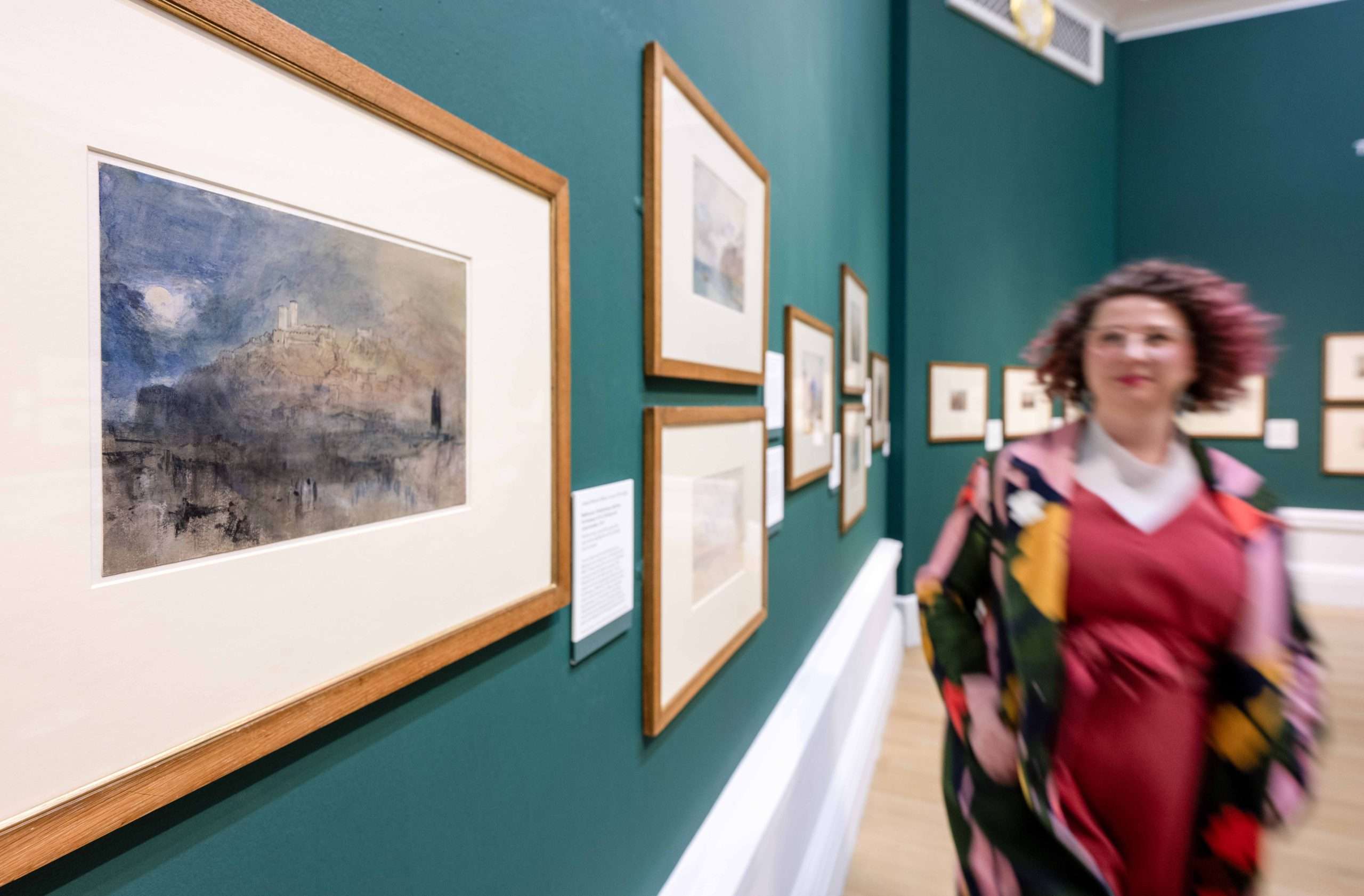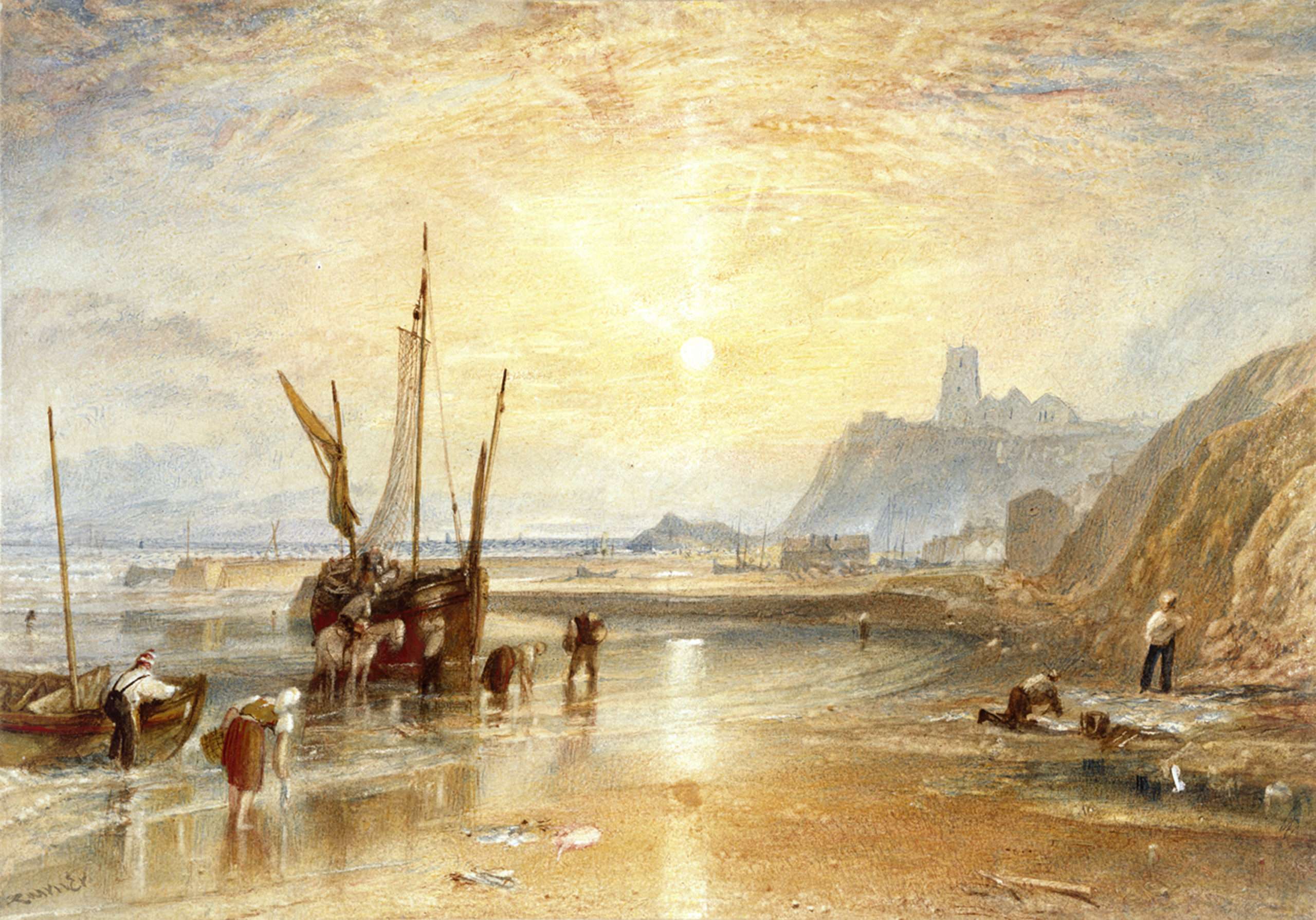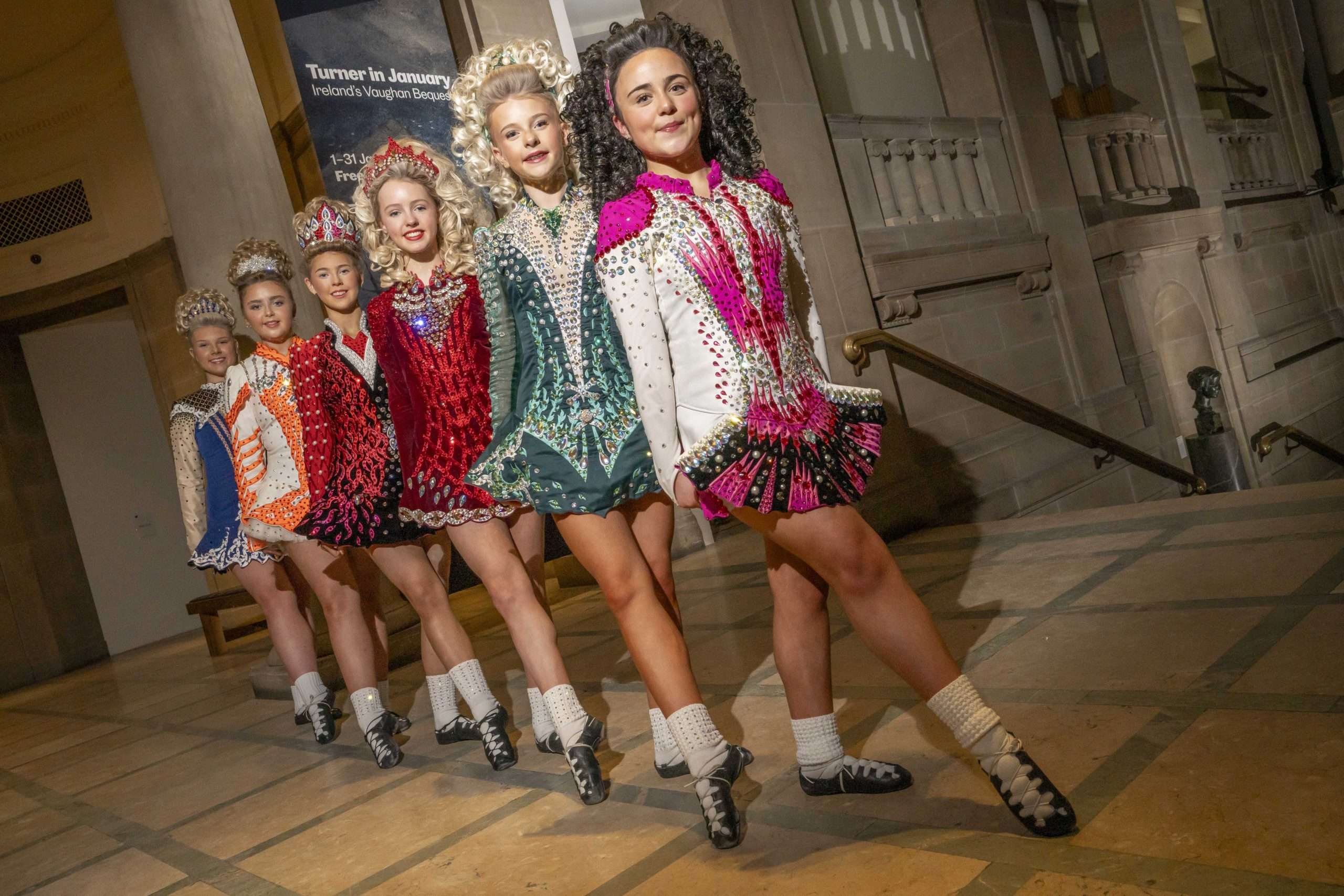This January the National Galleries of Scotland kicked off the 250th birthday of much-loved artist, Joseph Mallord William Turner (1775- 1851), with a special celebration. Visitors to the treasured Turner in January exhibition marvelled at a new selection of over 30 watercolours that had never been seen before in Scotland, in an exchange with the National Gallery of Ireland. The most famous British artist of the 19th century, Turner’s career spanned over 50 years and the Turner in January exhibition is popular annual tradition that has been taking place since 1901, as David McVey explains.
The Scottish National Gallery occupies an imposing and complex building rising out of Princes Street Gardens, with the castle soaring nearby and trains rattling past from Waverley Station. The building dates from 1859 but has frequently been modernised and freshened up. As recently as 2023, several bright new galleries for displaying Scottish art were opened. The Gallery works closely with the adjacent Royal Scottish Academy, the impressive classical building that opens out onto Princes Street.
In the National you can marvel at paintings by Titian, Rembrandt, Constable, Gainsborough, Monet and van Gogh alongside local lads like Raeburn and Allan Ramsay. For the pleasure of viewing these works that are of quite incalculable monetary value, you won’t pay a penny. This is the National Gallery. It belongs to us, and so do the works of art. And the same is true of the satellite galleries; the Scottish National Portrait Gallery in nearby Queen Street and the Scottish National Gallery of Modern Art, a short bus journey away.
The Vaughan Bequest

Of course, charges sometimes apply when special exhibitions are held that bring in works of art from other places and cost a great deal to put on. However, there’s one annual show that you can view at no additional cost; the Vaughan Bequest, featuring watercolours by the great English artist Joseph Mallord William Turner (1775-1851). At the beginning of January these 38 works are put on display and then at the end of the month put in storage again. Why?
To find out we need to know a little more about the man behind the Vaughan Bequest. Henry Vaughan was born in the London borough of Southwark in 1809. He came from a wealthy philanthropic Quaker family: his father was a manufacturer of hats – in an era when everybody wore hats. Vaughan inherited a huge fortune from his father and never needed to work. When he died in 1899 he left £237,000; unimaginable wealth for the time, even though, for much of his life, he had tried to give away as much as he could.

Vaughan also spent considerable sums of money assembling a breathtaking collection of art. He acquired and displayed (in his home at Cumberland Terrace near Regent’s Park) works by Rembrandt and Michelangelo and Rubens, and was particularly known for his holdings of works by Constable and Gainsborough. But he also collected contemporary art – and he was a contemporary of Turner. In particular, he accumulated a large number of Turner’s watercolours, buying them from art dealers.
It’s likely that he never actually met Turner. Much of his collection he bequeathed to public galleries. Of his Turner watercolours, six went to the Victoria and Albert Museum in London, 23 to the National Gallery in Trafalgar Square (although they are now displayed in Tate Britain), 31 to the National Gallery of Ireland, and the biggest hoard, 38, to the National Gallery of Scotland. Turner visited Scotland several times and found a great deal of inspiration here.
Turner watercolours should be treated especially carefully

Vaughan looked after his art and his bequests stipulated that the Turner watercolours should be treated especially carefully. Yes, they should be freely accessible to the public, but they should only be exhibited in the dark, gloomy month of January to protect them from the harsher lights of spring, summer and autumn. And that’s why his bequest is displayed in the Scottish National Gallery for only a month at the gloomiest time of year.
The examples bequeathed to Edinburgh cover a wide geographical range of subjects from Italian lakes to English rivers. There are views of historic cities such as Durham, Venice and Heidelberg and also harbour and seafaring scenes, as you’d expect from the artist of The Fighting Temeraire. Among the Alpine scenes are three views of the Falls of Rhine at Schaffhausen, but there is also an affecting view of the humble Falls of Clyde and two scenes from near Sir Walter Scott’s home of Abbotsford. Perhaps the most striking and Turneresque of the Scottish watercolours is Loch Coruisk, Skye which communicates the wild grandeur of the scene with characteristic drama and colour. Oddly, there are no views of Edinburgh in the SNG’s bequest.

In January 2025, the Edinburgh Vaughan Bequest exhibition was different. To mark the 250th anniversary of Turner’s birth, items from the Edinburgh bequest were displayed in the Irish National Gallery in Dublin, while examples from the Irish collection (which includes a watercolour of Edinburgh from 1801 that has never been displayed in the city before) appeared in the Edinburgh exhibition. The Edinburgh show took place in one of the rooms of the Royal Scottish Academy building. The Dublin collection actually includes a view of Edinburgh, so it seemed a rather fitting exchange.
So popular was the 2025 Edinburgh exhibition that the waiting time to even get into the room was sometimes ninety minutes or more! Obviously, the appeal of seeing a different selection from the usual had brought out the crowds. I tried to visit on two occasions but I had meetings to attend and couldn’t spare the waiting time. Disappointing, perhaps, but it was also encouraging to see so many people excited about seeing art.
Next January, the Scottish National Gallery’s own Turner watercolours from the Vaughan Bequest will all be back on display. If you’re in Edinburgh then, they will provide a great escape from the bleak January streets. But I recommend that you get there early…
Main photo: Scottish National Gallery. Photo: Eoin Carey.

